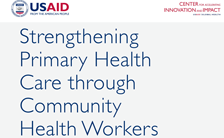- What We Do
- Agriculture and Food Security
- Democracy, Human Rights and Governance
- Economic Growth and Trade
- Education
- Environment and Global Climate Change
- Gender Equality and Women's Empowerment
- Global Health
- About Us
- Health Areas
- Health Systems and Innovation
- Center for Innovation and Impact
- AI in Global Health
- Blended Finance Roadmap
- Financing Framework
- Human-Centered Design
- Innovation Realized
- Intro & Scale
- Investing for Impact
- Market Shaping Primer
- Pathways to Scale
- Ready, Set, Launch
- Software Global Goods Valuation Framework
- Strengthening Primary Health Care
- UAVs in Global Health
- Value-Based Care
- e-Learning Courses
- Unleashing Private Capital
- Newsletter
- Data
- Gender and Health
- Health Systems Strengthening
- Vision for Action
- Center for Innovation and Impact
- Resources
- Humanitarian Assistance
- Transformation at USAID
- Water and Sanitation
- Working in Crises and Conflict
- U.S. Global Development Lab
Speeches Shim
Community health is a critical component of strong health systems and is essential to achieving universal health coverage and meeting the United Nations Sustainable Development Goals (SDGs). Closing the $2 Billion Gap is a report that strengthens the knowledge base around the need for community health financing and draws lessons from two unique examples—Zambia and Ethiopia—on financing pathways to secure additional resources.
This report, developed by CII in partnership with the Financing Alliance for Health, is designed to help governments, donors, and other partners in the global health community develop and strengthen country-level financing pathways for community health to unlock the economic and social returns that strong, integrated community health platforms promise.
Closing the $2 Billion Gap:
- Presents a new analysis estimating a $2 billion funding gap for community health in sub-Saharan Africa
- Examines the political commitments, structures, and processes needed at the country level to close the gap
- Features examples from Ethiopia and Zambia on how to mobilize funding, increase resource efficiency, and build strong, integrated community health platforms


Comment
Make a general inquiry or suggest an improvement.